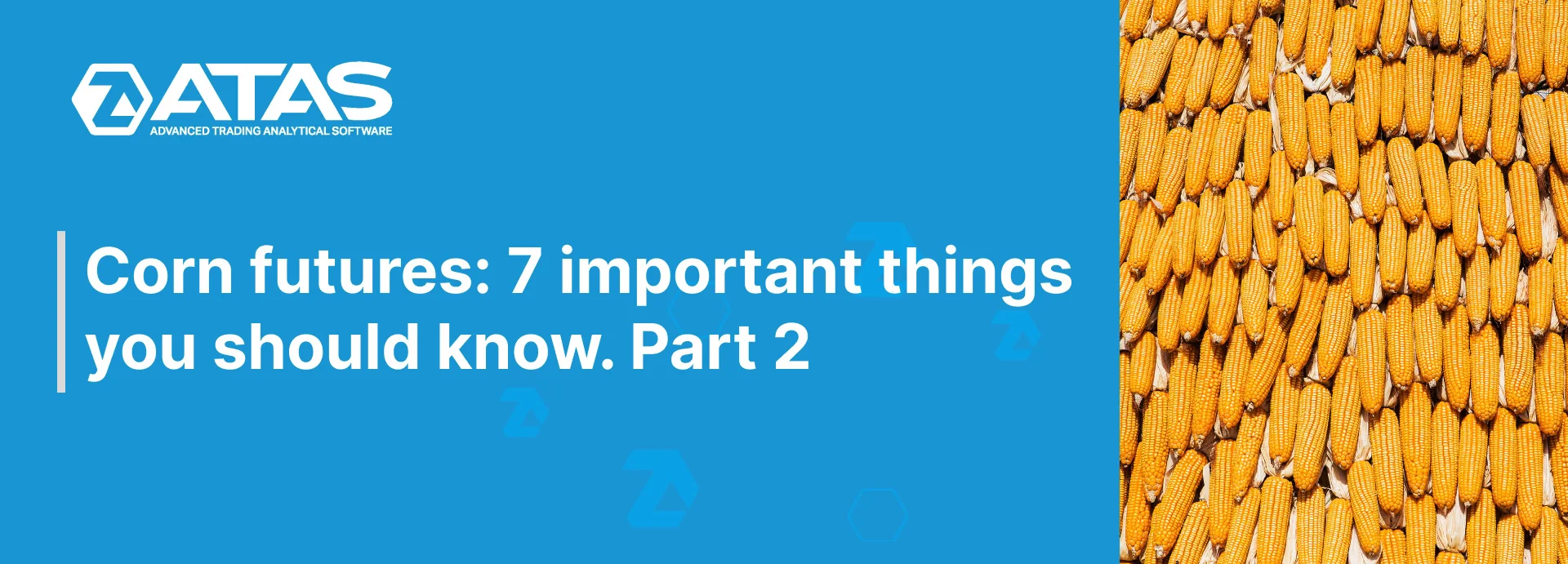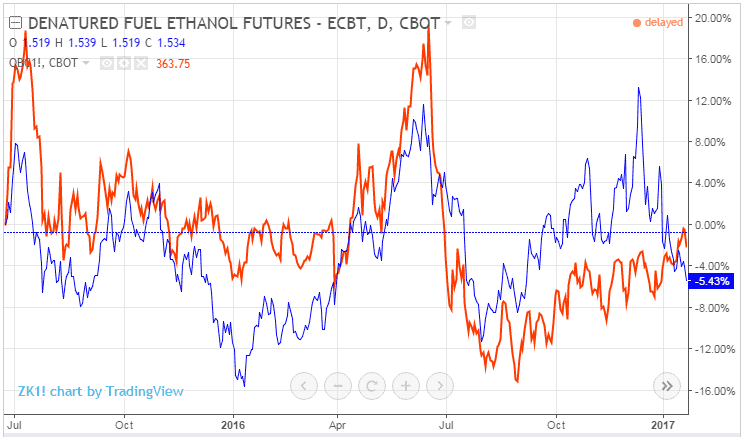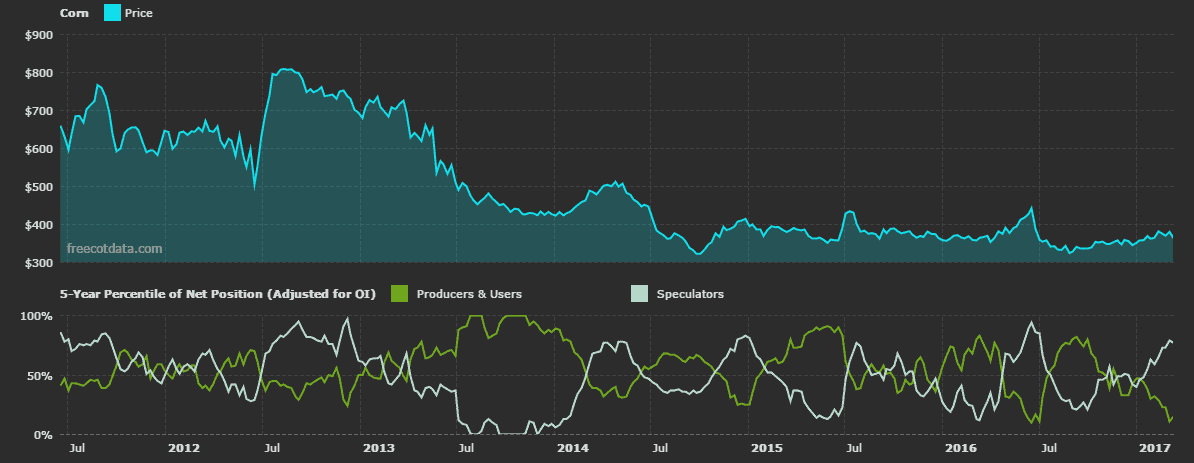7 things about corn futures. Part 2
Dear friends! Today we will continue to speak about seven main factors that influence the corn futures prices (you can read the first part of the article here). These highly liquid derivatives are actively traded on the world exchanges and attract many traders. We hope that this review will be useful for you.
Demand on ethanol and its influence on the corn futures price
It’s interesting that the ethanol prices influence the corn futures prices. It is connected with the fact that corn is the main primary product for production of ethanol fuel in the US. More than 40% of this agricultural crop is used for production of ethanol fuel, while the rest of it is used for livestock fodder (which, as a rule, influences the livestock market prices) and only a very small portion of the corn harvest volume is consumed by people.
Ethanol is mainly used as a fuel ingredient. More than 13 billion bushels of corn, the biggest part of which was used for production of ethanol, was produced during 2013-2014. 98% of all ethanol produced in the US is the result of corn processing. According to experts, up to 2.8 gallons of ethanol could be produced out of one bushel of corn.
Demand on ethanol constantly grows from the 1970s since the US Government sanctioned increase of its content in gasoline and other similar products. In 2011, the United States Environmental Protection Agency (EPA) allowed using alcohol-gasoline blends with 15% rich bioethanol. A high demand on ethanol results in the increase of demand on corn and, consequently, provokes the futures price growth. The positive correlation between ethanol and corn is higher when the demand is high. This relation is less obvious during the periods of low demand.
Speculations and hedging in the corn futures market
An estimate of price movement is reduced, in the end, to the analysis of two price forming market forces – major speculators (‘managed money’) and hedgers. The corn producers and consumers play the role of hedgers in this case. These are factories or major companies, for which corn is the key element of their product or business.
The weekly report of the Commodity Futures Trading Commission (CFTC) may help an individual trader to understand what positions in the corn futures market are taken by major participants. The CFTC report is published every Friday and provides information about positions for a week, which ended on Tuesday. It means that the information is provided with a 3-day delay. Sometimes, the publication could be postponed for several days due to the holidays. The CFTC web-site provides an open access to the reports and schedule of their publication. The picture below provides some insight into how traders use this information in their interests.
The upper part of the picture is a linear corn futures price chart. The green and white curves below reflect a relative change of the net position of hedgers and major speculators respectively.
The net position is the difference between the long and short open positions on forward contracts for a certain commodity. If the net position of a certain group of the market participants grows, it means that the number of buy positions grows faster than the number of sell positions and vice versa.
A hedgers’ net position change, as a rule, is ahead of the price and minor speculators often use this regularity.
As the prices grow, hedgers-producers prefer to register prices and open more and more bearish positions, which, consequently, results in reduction of their net position. Hedgers-producers, on the contrary, sell when the market goes high, since they block their losses in a higher price of a real commodity. The interest of hedgers-consumers to buy grows when the market goes down. The consumer is always glad to buy cheaper.
Unlike the hedger’s position, the speculative capital repeats the market tendencies and, in so doing, takes the hedger risks.
Influence of demand and supply on corn futures prices
Demand and supply are a reflection of the market dynamics, which could significantly influence the prices of exchange commodities. Traders that trade corn futures need to pay attention to the existing demand, since it may potentially provoke the rise or fall of the prices.
China, being the second largest world economy, exerts a strong influence on the corn futures demand, as well as the United States, which are the largest corn exporter in the world. Apart from the US, the major corn exporters are Brazil, Ukraine, Russia, India and South Africa. Changes in the economies of these countries influence the world corn balance. It is possible to understand the logic of price movements in the futures market if you correctly understand economic phases in the importing and exporting countries.
Demand on corn in China changes from year to year, which is a significant source of uncertainty with respect to the world demand. Nevertheless, traders have a possibility to monitor economic news from this country. You can find a lot of useful information in mass media.
A corn futures, without doubt, is an attractive trading instrument. However, there are many factors that influence the futures market of this grain crop. In the event you are a position or middle-term trader, try to take into account the above listed factors in order to trade corn futures successfully.





